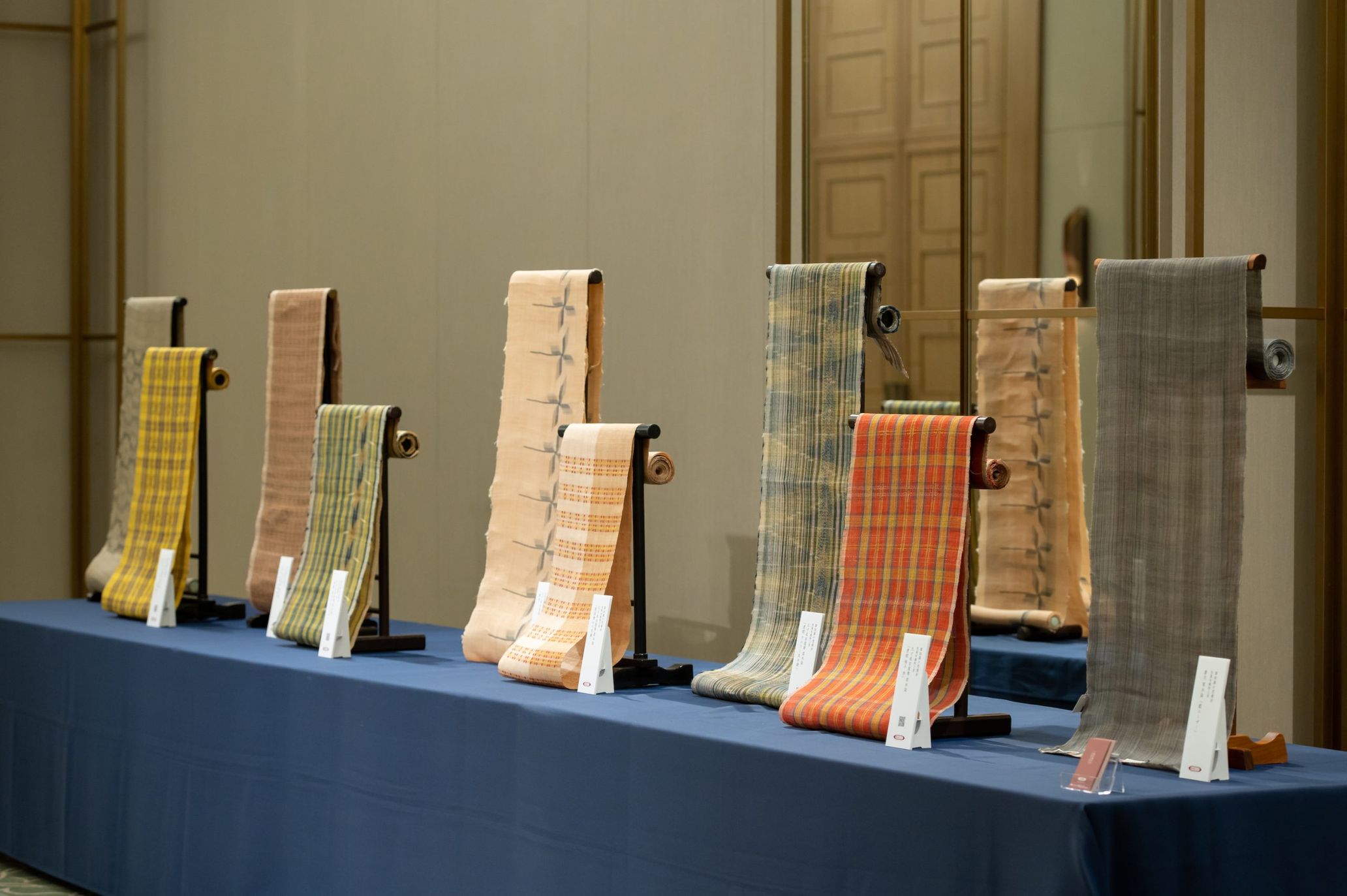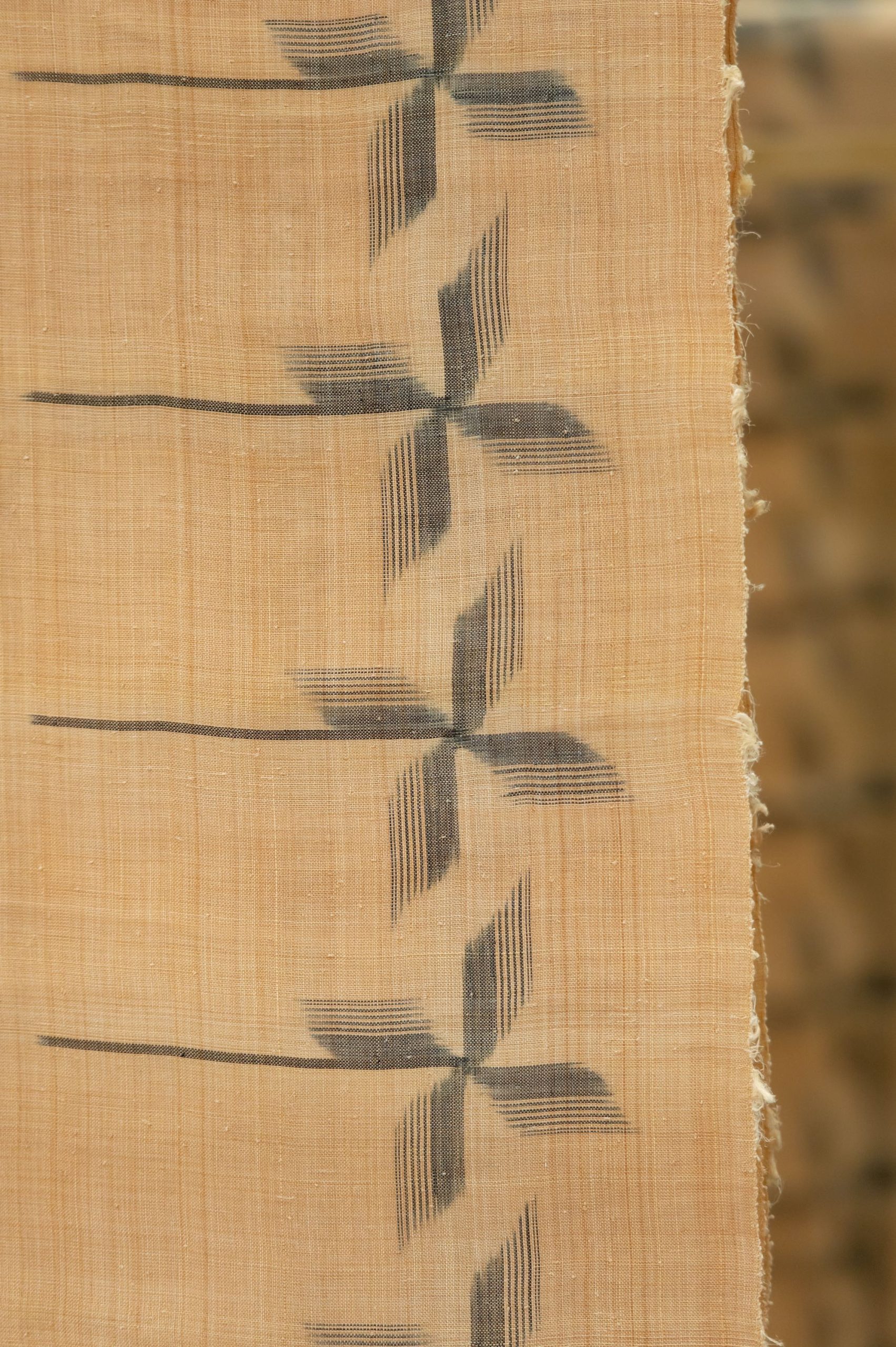Based on the concept of understanding Japanese “tashinami” (sophistication), this series rethinks the essence of Japanese culture through all kinds of people, communities, and phenomena. This time, we trace back the Okinawan bashofu’s trajectory through Toshiko Taira, the living national treasure who has put her all into its revival.

The unmatched natural textiles of Japan
People across the globe have been making natural fabrics derived from plants since ancient times. No other country has a variety of natural fabrics to the extent that Japan has. One of Japan’s most remarkable natural fabrics is bashofu, a textile made of banana fiber from Okinawa.
In Bashofu Monogatari, published in 1943, the founder of the mingei movement, Yanagi Soetsu, praises the fabric, saying, “It’s rare to see such a beautiful textile in this day and age. Whenever I see it, it seems like only it is authentic indeed. The reason seems clear upon questioning where its beauty stems from: the creation process renders the beauty inevitable.” He also states that bashofu is the most excellent Japanese textile to exist.
Bashofu is a delicate textile reminiscent of a mayfly’s wings, made with itobasho (wild Okinawan bananas). It goes through many painstaking, meticulous processes. Bashofu is known as a loved product from Kijoka, the northern part of Okinawa Honto, where the Yambaru forest is. One person is responsible for its revitalization: her name is Toshiko Taira, a living national treasure who dedicates her life to the craft. During the war, she worked in the volunteer women’s corps at a war plant in Kurashiki, where she met Soichiro Ohara, one of the prominent supporters of the mingei movement. This was the prerequisite for the re-emergence of bashofu, which Toshiko Taira didn’t think was possible then. After the war, she patiently brought itobasho fields back to life, which was completely wiped away by the American army to fight against malaria. Then, she opened a bashofu workshop. The Kijoka Bashofu Industrial Cooperative Association was recognized as an Important Intangible Cultural Property in 1974. A rare exhibition about this Japanese treasure was held in the city center.
At the “Bashofu – Living National Treasure Toshiko Taira Exhibition” held in Okura Shukokan Museum of Fine Arts, I saw famous works and tools used by the 101-year-old Toshiko Taira, alongside around 70 reproduced costumes from the Ryukyu Kingdom era. Although the exhibition was held in Tokyo, the works on display made me feel like I was in Kijoka, Okinawa.
This year marks the 50th year since Okinawa was reverted to Japan. Many exhibitions and events are being held to spotlight Okinawa, but this one was unique in that it focused on bashofu. Moreover, Toshiko Taira’s successor, Mieko Taira, gave a special lecture at The Okura Tokyo, the adjacent hotel to the museum. You could eat Okinawan cuisine at the event, which used native ingredients, and Ryukyu music. The entrance of the hotel was decorated with wild banana trees. Many people with a penchant for beautiful things, including those wearing bashofu, enjoyed the Okura-ness of the exhibition, cultural event, museum, and hotel decorations.

Bashofu, one of the most incredible Japanese textiles in existence
In Kijoka, the home of bashofu, women take on arduous thread-making and textile-making processes, led by Toshiko and Mieko Taira. The textile is also known for being difficult to pull off. On top of having a distinct firmness, it feels like your body is drowning in the textile because it doesn’t adapt to the body quickly. However, at Okura Shukokan, I saw a woman wearing bashofu like a kimono made of raw silk. The woman in question was Mieko Taira, the lecturer. Her kimono had been washed many times for decades and had a soft feel to it, unlike the rustic yet sharp nature of bashofu. She spoke about how one of Toshiko Taira’s works would especially be hard to wear.
She was referencing a kimono with a sparrow print. Bernard Leach, one of the leading potters of the mingei movement, looked at the textile and said, “The birds are flying in the sky.” He drew a bird on the spot and gifted the drawing to Toshiko Taira. It’s still preserved safely in the Taira household.
Soetsu Yanagi praised bashofu for being one of the most sublime natural fabrics because the practice of dyeing, weaving, and agriculture act as one. Okinawa has always been an island known for its dyeing and weaving, but bashofu is valuable because it uses banana fibers; the textile production starts with cultivating them, which can be considered a primitive practice. It is also a symbol of the aesthetic of Okinawa. At Mieko Taira’s lecture, she spoke about the difficulty of the Important Intangible Cultural Property being limited to the Kijoka Bashofu Industrial Cooperative Association in Kijoka. Four years from now, the Kijoka Bashofu Industrial Cooperative Association, founded by Toshiko Taira with 11 members, will welcome its 50th anniversary. According to Mieko Taira, limiting the textile to the Kijoka area won’t solve the difficulty of handing the craft down to future generations. Respecting Okinawan and Japanese culture and dealing with pressing issues are critical. From this perspective, a bashofu-only exhibition in the city meant something powerful.


Like the tale of Vega, a weaver, and Altair, a cowherd, many textiles in history have been created by women. After the war, one woman named Toshiko Taira returned to her homeland and revived a material in Kijoka, Okinawa, with other women. It can be said that the bashofu textile—grown, harvested, and woven by women— is a symbol of post-war peace. The exhibition and event played a meaningful role in introducing others to the depth of this textile. Preserving this craft beyond this anniversary year and Okinawa is the clear way to keep one of the most incredible Japanese textiles alive.
Photography Takeshi Takeda
Translation Lena Grace Suda

